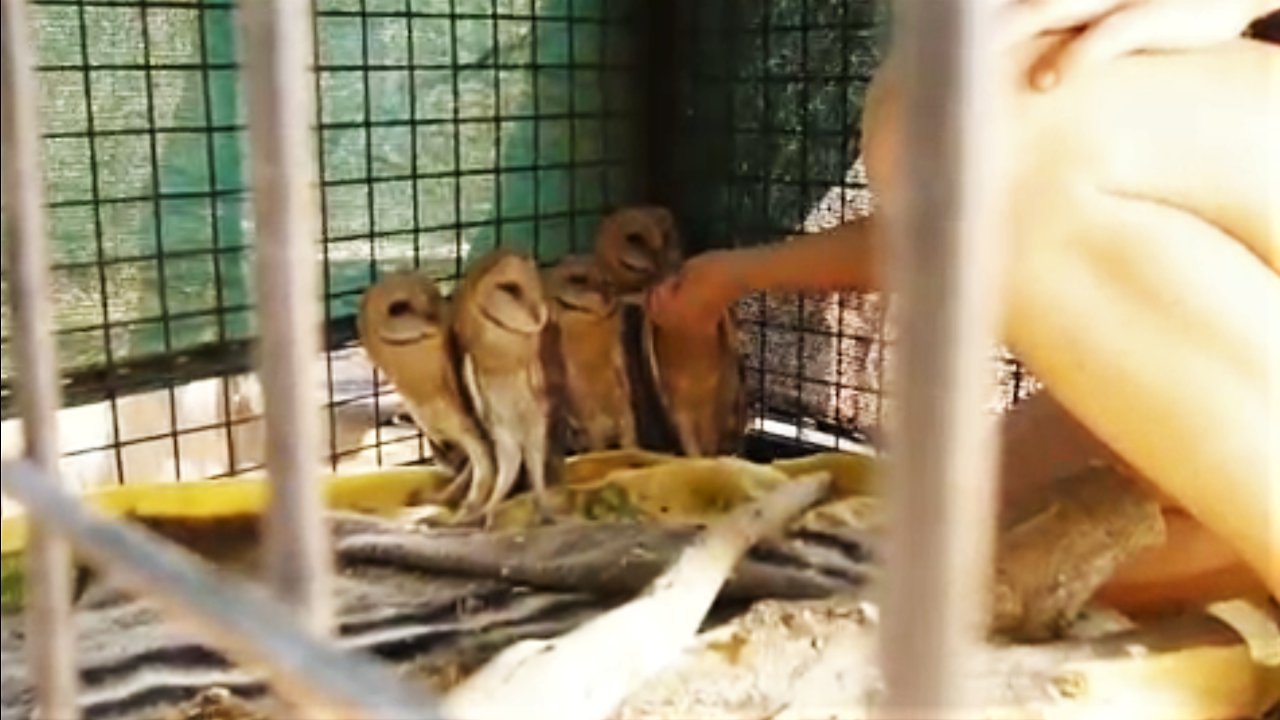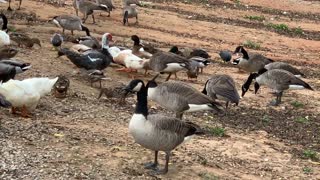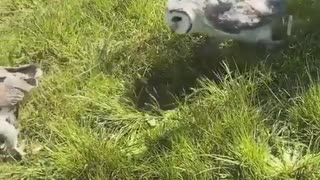Premium Only Content

Rescued Barn Owls getting fed
These young Barn Owls were rescued as chicks, which means that they have to be fed until they are old enough to be released back into the wild and hunt for themselves. They are not always cooperative, though, and it might take many tries until they actually take the piece of meat in front of their beaks.
The Common Barn Owl (Tyto alba) used to be considered to occur all over the world, but since 2008 the species was split in three: the Western Barn Owl (Tyto alba), found in Eurasia and Africa; the Eastern Barn Owl (Tyto javanica), found in Southeast Asia and Australasia; and the American Barn Owl (Tyto furcata), found in the Americas. Some people, however, still consider the American Barn Owl and the Eastern Barn Owl to be subspecies of the Common Barn Owl (Tyto alba), and not two separate species.
The Tyto genus is still shared with fourteen other species, from all over the world: the Greater Sooty Owl (Tyto tenebricosa), the Lesser Sooty Owl (Tyto multipunctata), the Minahassa Masked Owl (Tyto inexspectata), the Taliabu Masked Owl (Tyto nigrobrunnea), the Moluccan Masked Owl (Tyto sororcula), the Manus Masked Owl (Tyto manusi), the Golden Masked Owl (Tyto aurantia), the Australian Masked Owl (Tyto novaehollandiae), the Sulawesi Masked Owl (Tyto rosenbergii), the Red Owl (Tyto soumagnei), the Andaman Masked Owl (Tyto deroepstorffi), the Ashy-faced Owl (Tyto glaucops), the African Grass Owl (Tyto capensis), and the Eastern Grass Owl (Tyto longimembris).
The Barn Owl is a medium-sized pale owl with a white heart-shaped facial disc. It avoids dense forest, but it is a common resident in most open habitats, such as lowlands, semi-arid and some arid regions, cliffs and rocky coasts, open marshes, mudflats, farmland with hedges, around towns, suburbs, and villages. It roosts in old buildings, hollow trees, caves and mine shafts.
-
 0:31
0:31
NataliaCara
2 years agoAdorable rescued Crab-eating Fox pup wants to catch what's making the weird noise
238 -
 5:05
5:05
ViralHog
4 years ago $0.26 earnedIceboat Rescued After Getting Frozen in Lake
6341 -
 1:51
1:51
stmaddox
3 years agoDucks and geese getting fed.
10 -
 0:11
0:11
Arti2242
3 years agoOwls get a little too comfortable while getting clicked
25 -
 1:46
1:46
ViralHog
4 years ago $0.03 earnedKitten Rescued after Getting Paw Stuck Between Fence Boards
4924 -
 3:42
3:42
WMAR
3 years agoGetting Warmer...
163 -
 0:59
0:59
davidloop65
4 years ago $14.82 earnedDog miraculously rescued after getting hit by car
14.3K13 -
 2:30
2:30
WXYZ
3 years agoGetting colder
641 -
 2:00:28
2:00:28
Barry Cunningham
9 hours agoBREAKING NEWS: D.O.D. PRESS CONFERENCE WITH PETE HEGSETH AND GENERAL CAINE!
106K13 -
 1:21:29
1:21:29
JULIE GREEN MINISTRIES
2 hours agoLIVE WITH JULIE
64.2K139